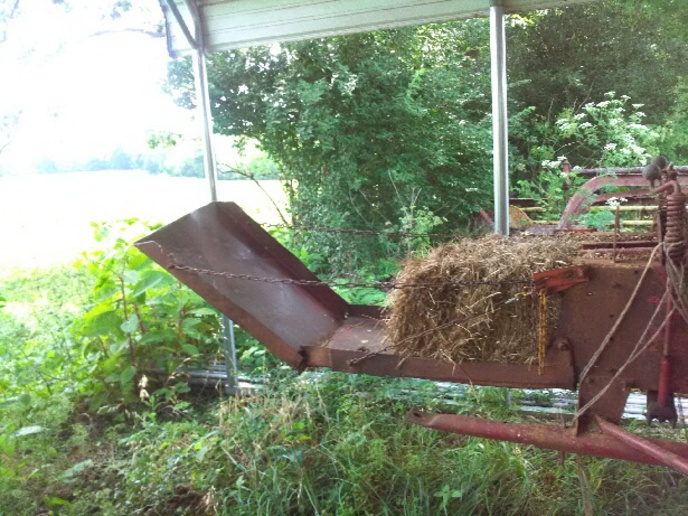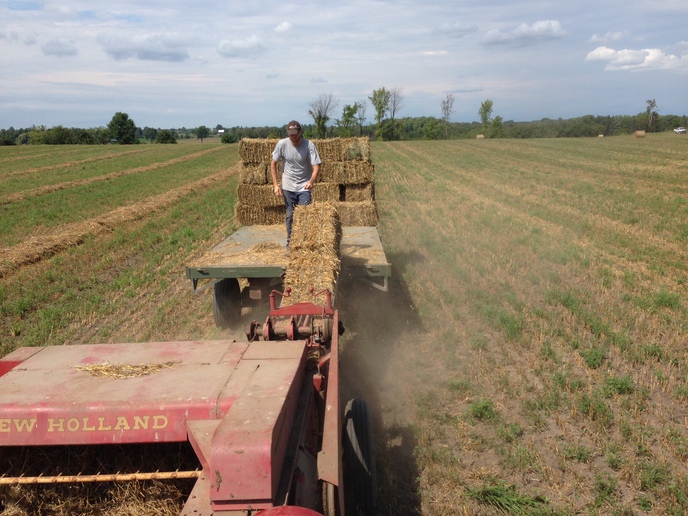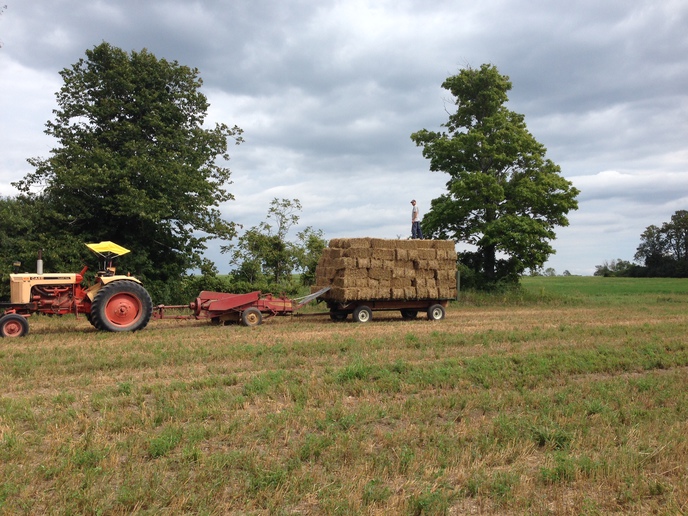lastcowboy32
Well-known Member
Good morning from Central New York, where we might be able to bale again...someday.
Also, I feel for the midwest, I can't imagine what they are going through with planting right now.
In the meantime, I've gathered up some scrap metal and I want to modify the chute on our NH276 so that we can bale directly onto our flatbed wagons, as opposed to picking bales up off of the ground.
Can anybody share some dimensions with me? How far from the end of the bale chamber should the front of the wagon be?
Should the chute actually reach past the front of the wagon and up onto the deck, or is that a recipe for a bent chute? If not, how far short of the deck should it end, while allowing a reasonable reach for a person on the deck with a hay hook?
It seems that taking the wagon into a dip in the field, especially while turning...would not be a good idea. Wouldn't that jam the chute into the wagon?
Help me save my back
Thanks in advance for any tips.
Also, I feel for the midwest, I can't imagine what they are going through with planting right now.
In the meantime, I've gathered up some scrap metal and I want to modify the chute on our NH276 so that we can bale directly onto our flatbed wagons, as opposed to picking bales up off of the ground.
Can anybody share some dimensions with me? How far from the end of the bale chamber should the front of the wagon be?
Should the chute actually reach past the front of the wagon and up onto the deck, or is that a recipe for a bent chute? If not, how far short of the deck should it end, while allowing a reasonable reach for a person on the deck with a hay hook?
It seems that taking the wagon into a dip in the field, especially while turning...would not be a good idea. Wouldn't that jam the chute into the wagon?
Help me save my back
Thanks in advance for any tips.




